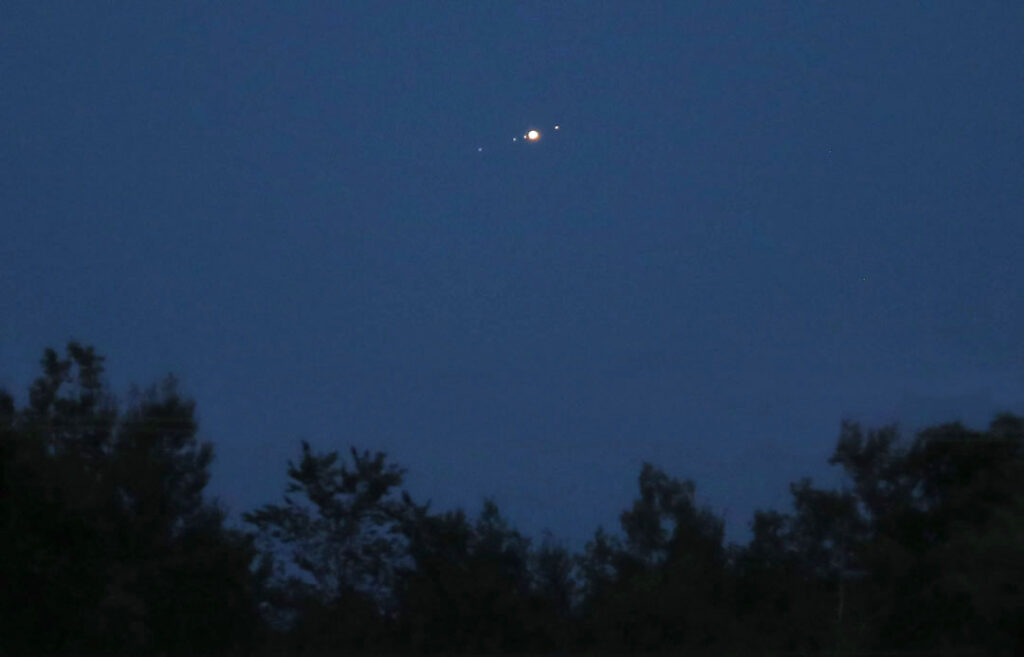The first month of autumn this year will bring us many interesting astronomical events, quite fit for observation with amateur instruments. As early as September 7, an opposition near perihelion will pass Juno — the first of four open objects in the Main Asteroid Belt. In 10 days, distant Neptune will be in opposition to the Sun, and on September 26, a great opposition of Jupiter awaits us, when it will be separated from the Earth by 3,953 a. u. (591 million km) — at a smaller distance from us, the largest planet of the Solar System was located back in 1951. Also of interest are the Moon covering Uranus on September 15 and the relatively bright star η Leo, which will be visible in the southern part of Ukraine before dawn on September 23.

September 2
• The Moon is 5° west of comet C/2017 K2 (PanSTARRS, 7.0ᵐ)
September 3
• The Moon is in the phase of the first quarter
• The Moon is 2° north of Antares (α Scorpio, 1.0ᵐ)
September 7
• The Moon is at perigee, 364,490 km from the center of the Earth
• Asteroid Juno (3 Juno, 7.8ᵐ) in opposition
September 8
• The Moon is 5° south of Saturn (0.4ᵐ)
September 9
• The Moon covers the star τ Aquarius (4.0ᵐ)
September 10
• Full Moon
September 11
• The Moon is 3° south of Neptune (7.8ᵐ)
• The Moon is 3° south of Jupiter (-2.9ᵐ)
September 15
• The Moon closes Uranus (5.7ᵐ)
September 17
• The Moon is in its last quarter phase
• The moon is 1° north of Mars (-0.4ᵐ)
• Neptune in opposition
September 19
• The Moon is at its apogee, 404,555 km from the center of the Earth
September 20
• The Moon is 3° south of Pollux (β Gemini, 1.2ᵐ)
September 23
• Autumnal equinox
• The Moon covers the star η Leo (3.5ᵐ)
• The Moon is 4° north of Regulus (α Leo, 1.3ᵐ)
• Mercury in inferior conjunction with the Sun
September 25
• The Moon is 2° north of Venus (-3.9ᵐ)
• New Moon
September 26
• Great opposition to Jupiter (-2.9ᵐ)
September 27
• The Moon is 3° north of Spica (α Virgo, 1.0ᵐ)
September 30
• The Moon is 2° north of Antares

